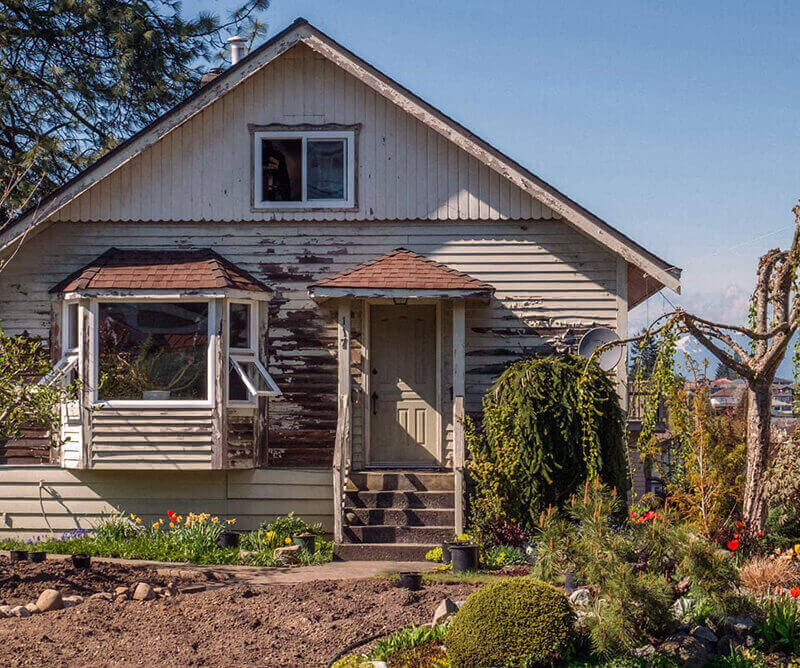What is an FHA 203(k) loan?
With this type of loan, you may benefit from lower interest rates and costs associated with repairs and modernization as compared to financing repairs through other methods such as:
- Home equity lines of credit (HELOCs)
- High-interest credit cards
- Personal loans
The interest you pay on your mortgage may be tax deductible, and repairs aren’t stretched out over months or years. One of the benefits of a 203k rehab loan is that homeowners can customize the home to meet individual needs and your own personal style.
Improvements may also increase home value and resale marketability. Usually, additional steps are involved with most FHA 203(k) loans, including involving appraisers, consultants, contractors, and inspectors – each with additional costs.
Standard 203(k) or Streamline 203(k)?
Which FHA 203(k) renovation loan do you pick?
Streamline 203(k) home loans:
- Let you tap into funds quickly and easily to make less extensive repairs
- No minimum repair costs are required
- The maximum repair amount is $35,000
The cost of renovations can be financed with this program including: a roof, gutters, downspouts, existing HVAC systems, plumbing and electrical systems, flooring, minor remodeling (not involving structural repairs), interior and exterior painting, and weatherization (insulation, storm doors, windows, and weather stripping).
Major or lengthy repairs and remodeling, like new construction or landscaping, are ineligible.
Standard 203(k) requires:
- A minimum of $5,000 in repairs but has no maximum.
- A Standard 203(k) rehab loan requires a HUD consultant who inspects the property, consults on the repairs and the associated costs, manages the project, and provides a work write-up.
Standard 203(k) repairs include all those eligible with the Streamline 203(k), as well as certain structural alterations and reconstruction, rehabilitation of garages, modernization of bathrooms and kitchens (including new appliances), removal of health and safety hazards, aesthetic appeal changes, installation of wells or septic systems, and handicapped accessibility improvements.
Fixer-upper pros and cons
We’ve all seen them – the countless renovation shows and programs on television. In a couple of weekends, a mold-infested house with leaky pipes, slanted floors and a crumbling foundation is restored with a little hardwood, some painted trim and a whole lot of shiplap and fluffy pillows. Cue the giant dumpster, sledgehammers, and work gloves! No problem – buying a home that needs renovations seems straightforward, right?
Unfortunately, the process is a little more complicated – especially for younger homebuyers that are planning on buying a fixer-upper in real life. The process gets even more complicated when it’s your first home.
Below is a list of the top reasons to be thinking about buying (or running away!) from a fixer-upper property, especially if you’ve found a potential home that needs a fair share of TLC.
Reasons to buy a fixer-upper
-
1
More house for your money: Homes purchased in fixer-upper condition may go for much less than asking price, which can help a buyer save money. Keep in mind, any money that you save off the original list price may go into your renovation budget
-
2
More charm: Houses that need work often have unique character, including leaded stained glass, pocket doors, arches, hardwood floors, and vintage fixtures.
-
3
Take control: Renovating a fixer-upper can put you in control, offering abundant choices to express your creativity in paint, floorplan, and renovation choices.
-
4
Better location and neighborhood: A lower price may permit the homebuyer to purchase in a more attractive area, especially in areas with higher prices that have more homebuyers bidding on houses.
-
5
Sweat equity: The ability to know that you did the work – and have created your own version of your dream home!
Reasons not to buy a fixer-upper
-
1
Unplanned expenses: Even the most well-thought-out budget will typically be over-run with unexpected costs. Plan to pad your budget by 15-20%, most home repair and renovation experts say.
-
2
Living in a construction zone: Do paint fumes, hardwood floor dust, and countless trash bags of building materials sound appealing to you? How will you feel halfway through the project? Unless you have a space to live offsite while repairs and renovations are being worked on, it can really be tough to live in a work zone.
-
3
Invisible repairs: Expensive repairs, like replacing unsafe wiring or plumbing that will not add much to the look and feel of your property when completed. These are not easy on the wallet – and in many instances are safety issues that must be completed to comply with code.
-
4
Neighborhood comps: For resale purposes, it is recommended that the renovations and/or remodel not increase the home’s value significantly beyond the surrounding homes’ value.
If you have found that perfect fixer-upper, it’s important to get a home inspection. A renovation project always carries some risk so ensuring there isn’t anything major is essential.
For more information, contact your local ASHI or InterNACHI®-Certified Home Inspector. Do research on the local schools, neighbors, crime rates, and be sure you think you’ll be happy in the neighborhood.





